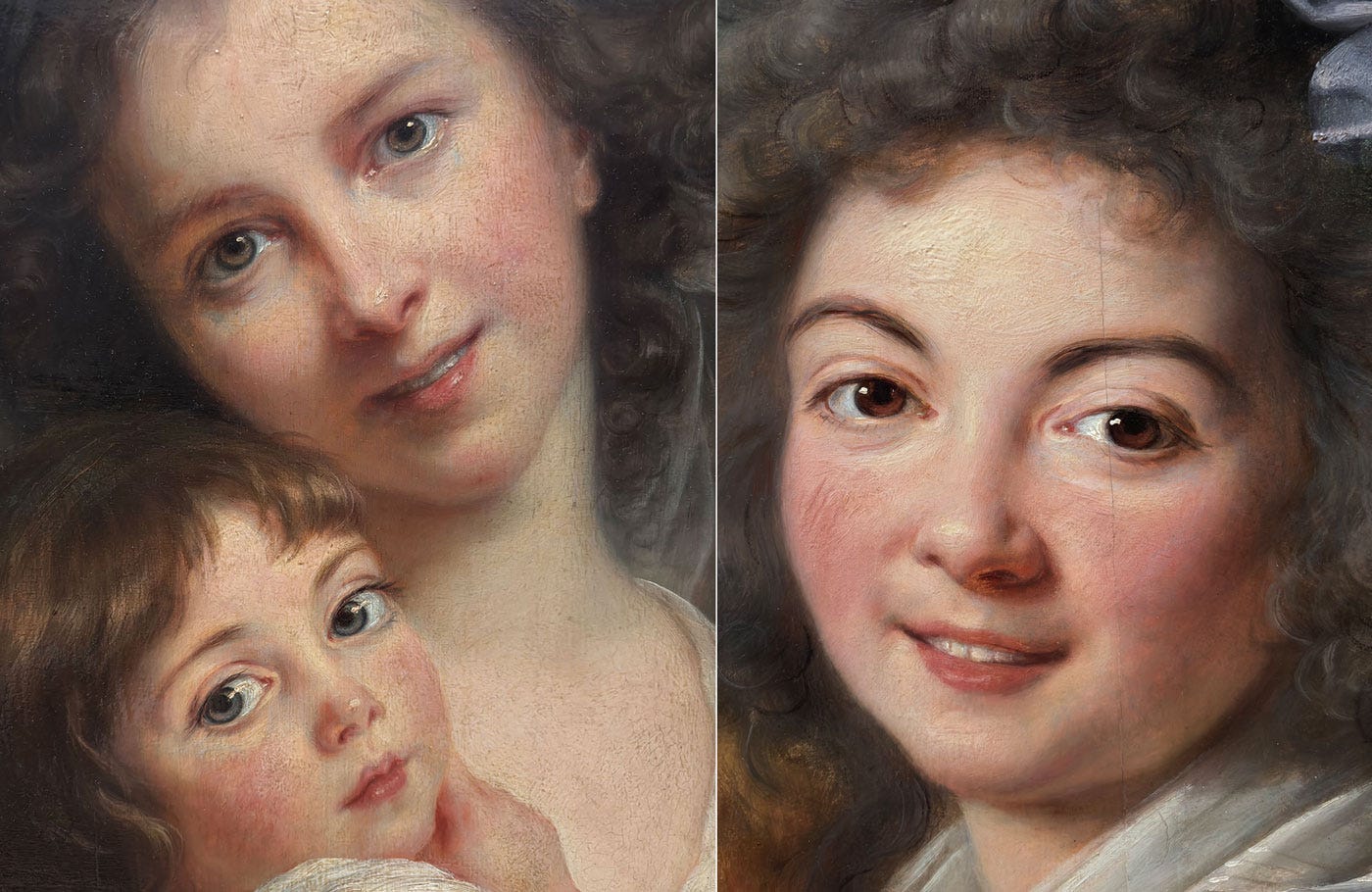
Meet one of the greatest portraitists of the 1800s, Élisabeth Vigée Le Brun.
As a seven-year-old who scribbled on anything and everything, her father, a painter, told her
You will be a painter, my child, or never will there be one.
Sadly, he never got to see the prediction come true.
At 23, she was called to Versailles to paint Marie Antoinette, a woman of the same age.
The result went so well that the Queen made Vigée Lebrun her official painter.
And Marie Antoinette pushed for her to be accepted by the Royal Academy.
Skeptics may say she owed her position to being close to the Queen.
Hold your horses:
Let's discuss the process of being accepted as a member of the Royal Academy of Painting and Sculpture.
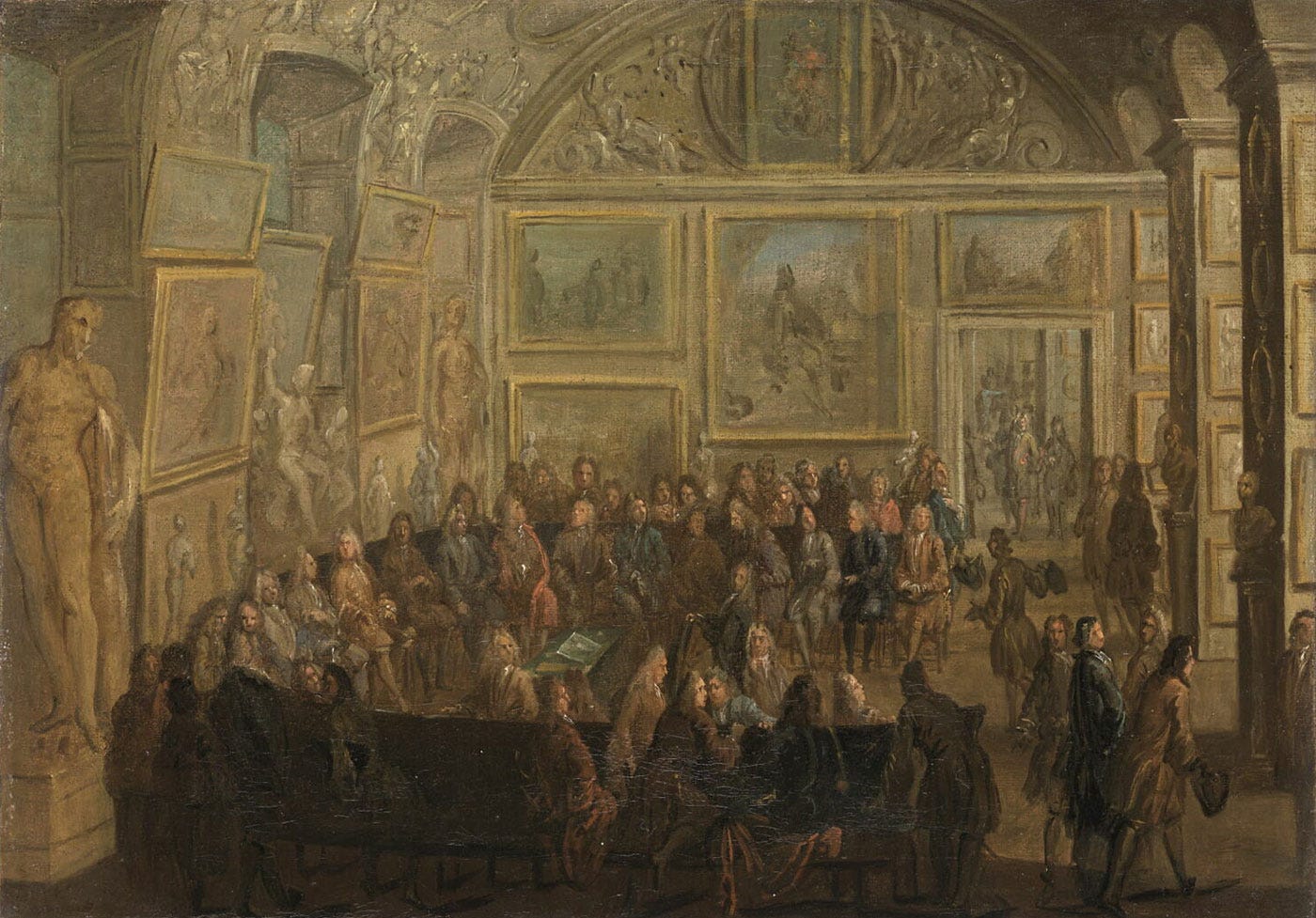
Allow me to translate the Academy’s category list for you. It starts at the bottom, craftsman, and goes to the top.
At the lower scale are painters of flowers, then landscapes and animals.
Then comes the human figure:
As the figure of man is the most perfect work of God on Earth, it is certain that he who makes himself the imitator of God by painting human figures, is much more excellent than all the others.
A Painter who paints only portraits does not yet possess this high perfection of Art and cannot claim the honor the most learned receive.
And the top categories of history, poetry, and allegory.
To be a painter of historical scenes meant being:
A great painter.
In other words, portraiture, a field where our friend Élisabeth excelled, was only the second step.
And, having the Queen directing the wind toward her sail, being accepted in the portrait category would have been a shoo-in.
But Élisabeth was more ambitious than that.
An ambitious artist
She did not apply as a portraitist but aimed for the top category, the preserve of the big boys, History.
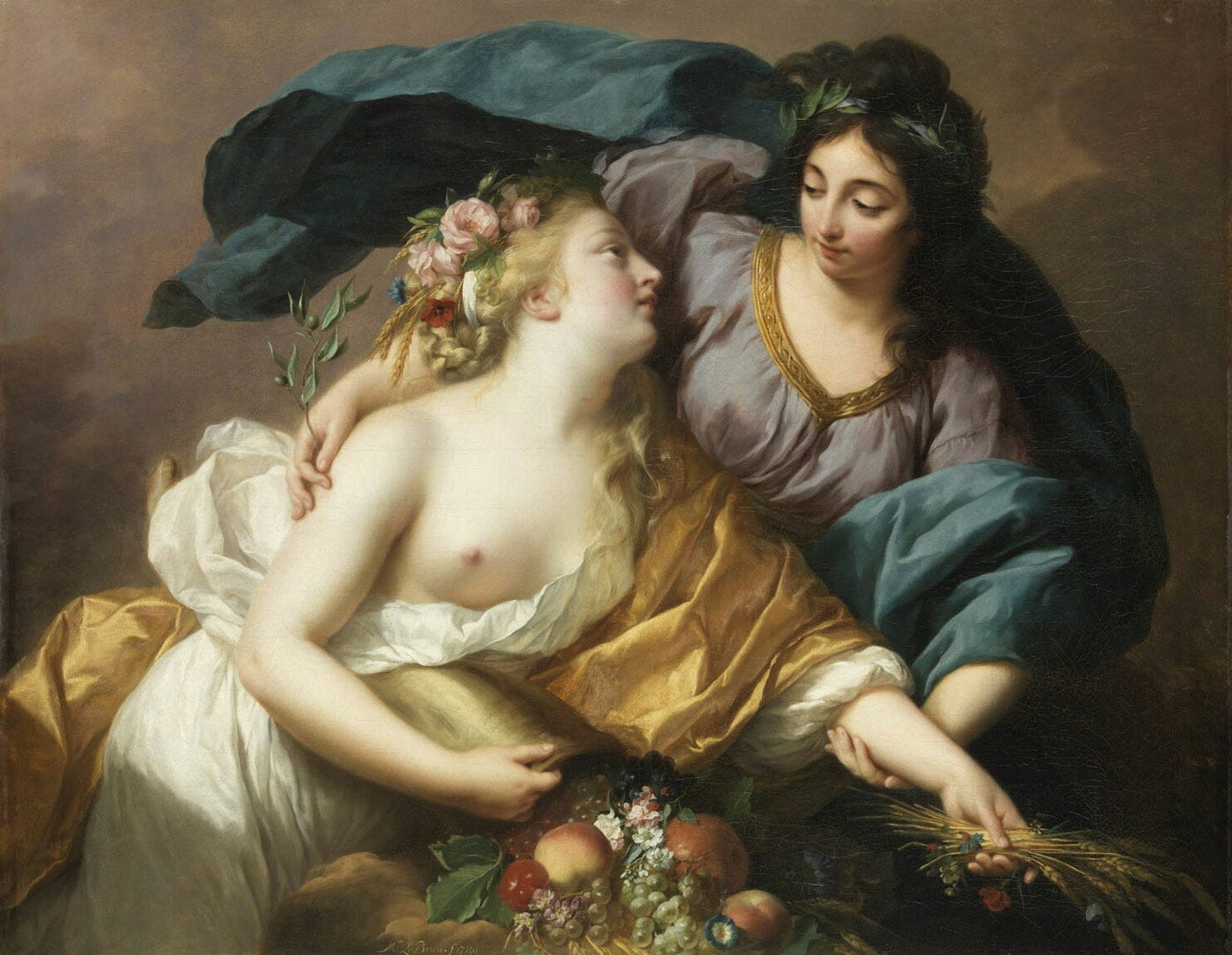
She was very reluctantly accepted: in making an exception, the Academicians stated they were
Executing with profound respect the orders of their sovereign.
Plain English translation:
We only did it because the King asked us to.
To make their point, they did not even grant her a category.
Without stepping on the King and Queen’s toes, it was a way to snub Élisabeth and deny her the prestigious status of History Painter.
The second skeptical argument is that she paints maternal love, as seen in the two self-portraits with her daughter Julie:
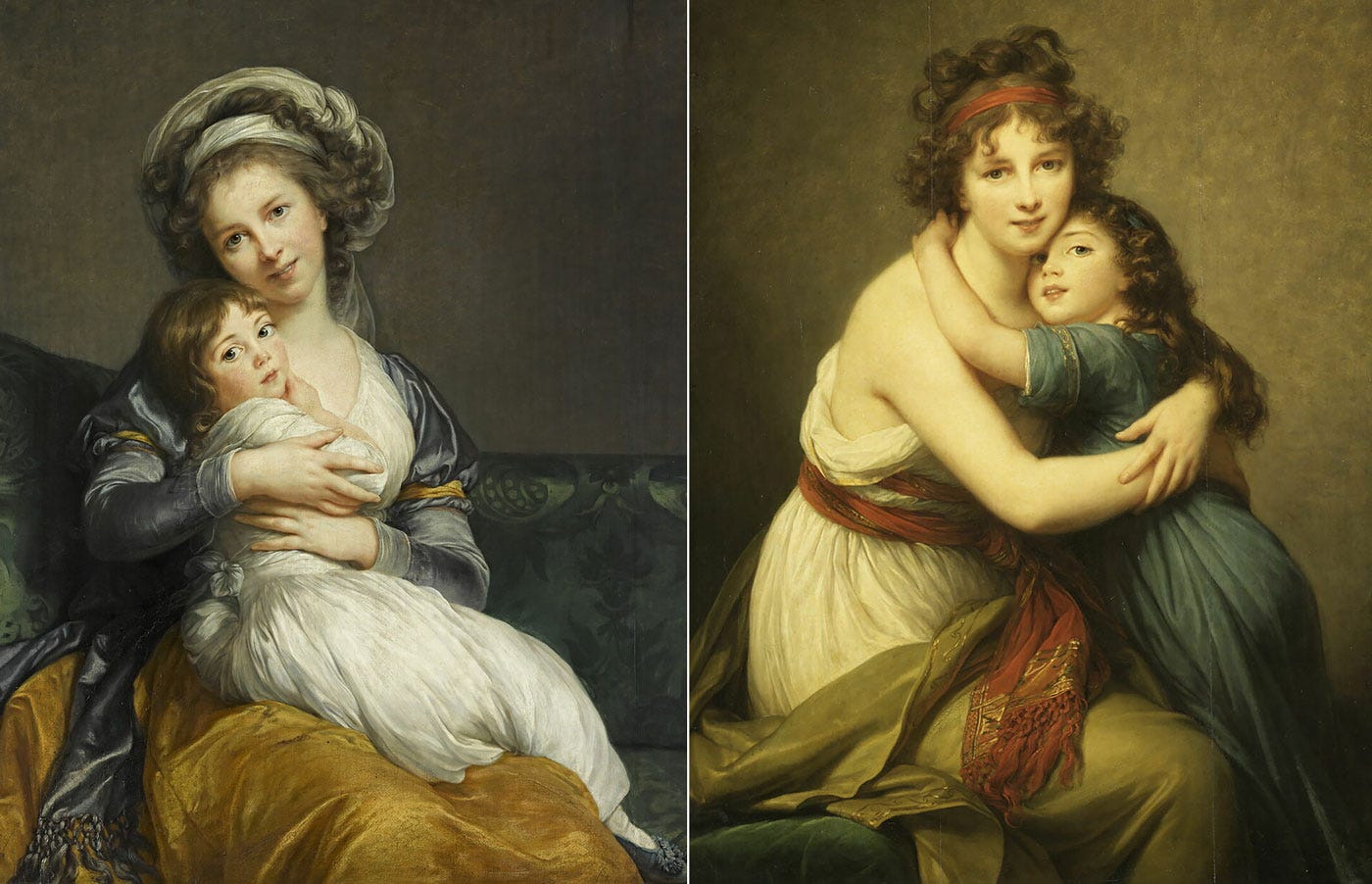
A smiling mother
Context:
Noble ladies did not raise their children. They threw their newborns into the arms of a wet nurse.
It was one of the reasons for the tragic infant mortality prior to modern hygiene and medicine.
Hence, raising one's child was a forward-thinking idea.
Criticizing a mother’s smile
When Vigée Lebrun exhibited at the Salon her self-portrait with her daughter, one criticism was precisely about her smile:
An affectation equally condemned by artists, amateurs, and people of taste, of which there is no example among the ancients, is that when laughing, she shows her teeth.
It is particularly out of place in a mother: she does not restrain her movements this way and gives herself over without measure to all the excess of her tender enthusiasm.
A mother holds her child, looks at you, and smiles. The horror!
The critic’s argument is that ‘people of taste’ avoid laughing as it shows one’s teeth.
Artistically speaking, she should have followed ancient tradition and refrained from painting smiles.
But the ‘particularly out of place in a mother’ line is disgusting.
The critic implies that when a mother holds her child and smiles, he thinks there’s a game of seduction at play…
Plain English translation:
That critic thinks that nude statues—as long they pretend to be Greek gods and goddesses—are perfectly fine.
Yet he manages to find dirty thoughts in the head of a smiling mother. All he sees is a reflection of his mind.
Élisabeth Vigée Le Brun, painter of smiles
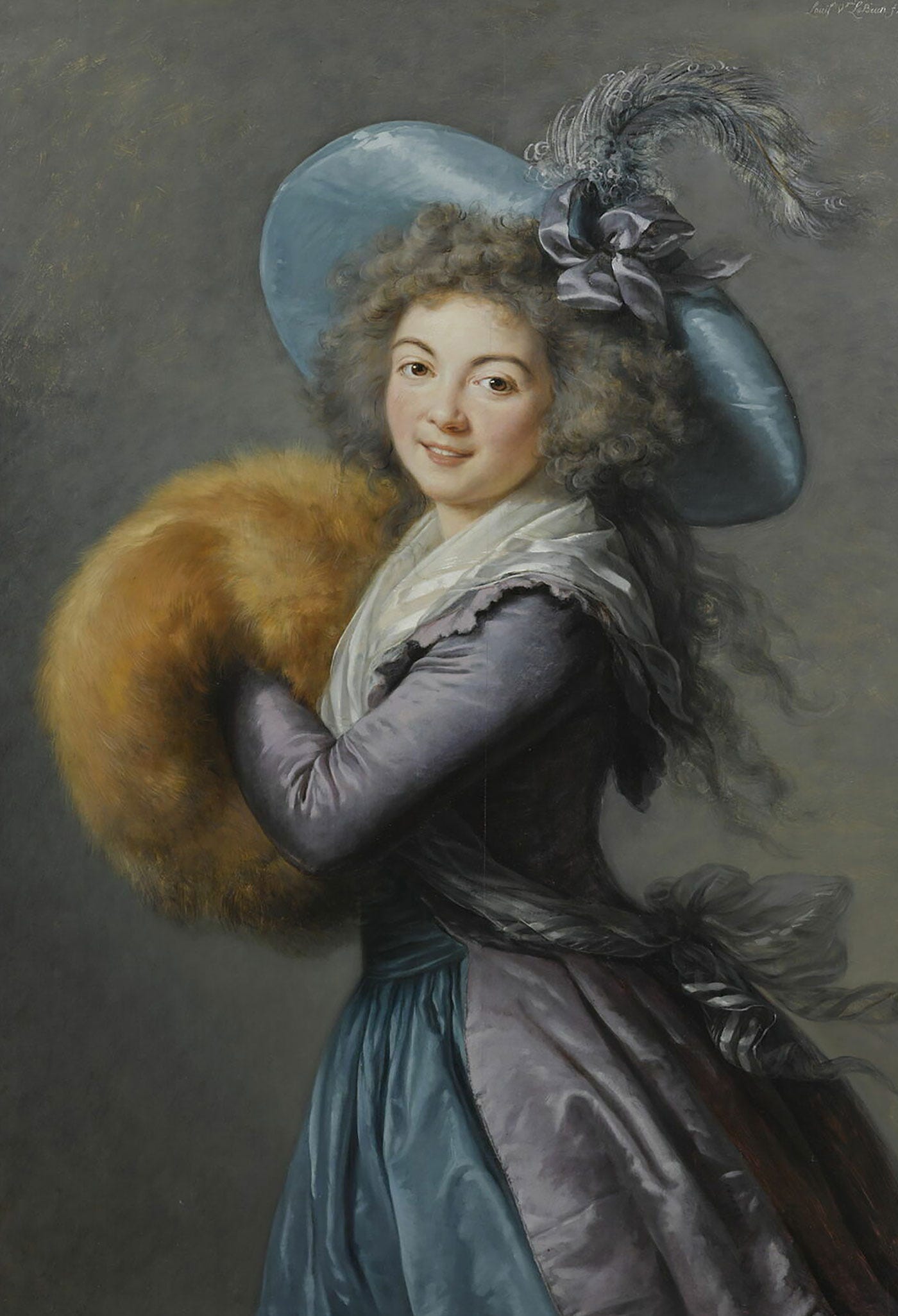
Our subject is smiling in art.
As we saw in the story 'When Paintings Smile At You'’, I trust it starts to make sense how revolutionary smiling was.
Not as something negative, shifty, or an act of seduction, but nothing more complicated than expressing happiness. Gasp!
My estimate of the number of paintings showing smiles in the Louvre is about 12.
Élisabeth Vigée Le Brun, with three paintings, is the author of a quarter of that rarefied field.
No wonder I could find only five portraits done by women with smiles.
It also helps to consider how Impressionism, with its Sunday afternoon relaxation scenes full of smiling faces, was an artistic revolution.
Drum roll:
Whatever the Academy thought, Élisabeth Vigée Le Brun was on the first step of their own artist category.
That of a great painter.
The Moment of Wonder is to appreciate how the simple act of smiling can change the world.
And maybe spend a minute or two pondering what history would have been like had talented women not been denied a chance to make the world a better place.
Notes
Criticism of Vigée Lebrun, translated from the French; Barthélemy Mouffle d’Angerville, Lettre I sur le Salon de 1787, that I translated and edited into English.
https://journals.openedition.org/transbordeur/997#ftn14
Conferences de l'Academie royale de peinture et de sculpture. Pendant l'année 1667. André Félibien, that I translated and edited into English.
https://gallica.bnf.fr/ark:/12148/btv1b8626828s/f33.item.langFR
Souvenirs de Mme Louise-Élisabeth Vigée-Lebrun:
https://gallica.bnf.fr/ark:/12148/bpt6k208330j/f11.item.r=enfance
https://www.metmuseum.org/fr/met-publications/vigee-le-brun
https://collections.louvre.fr/ark:/53355/cl010060474
https://collections.louvre.fr/ark:/53355/cl010063406







Made me smile.
Loved this!